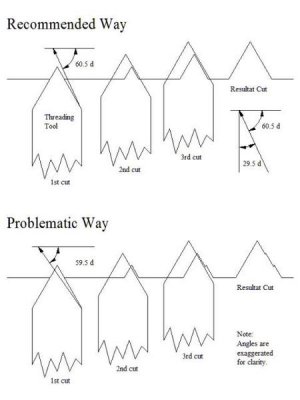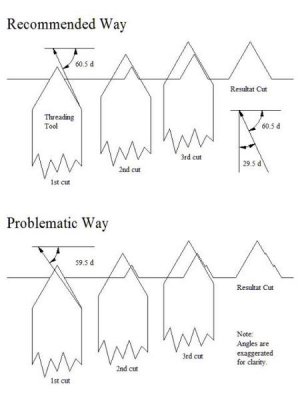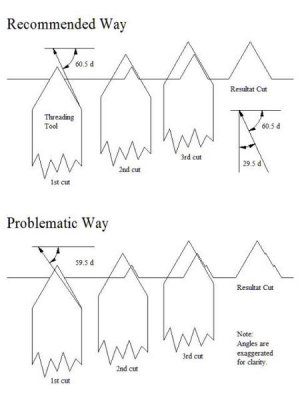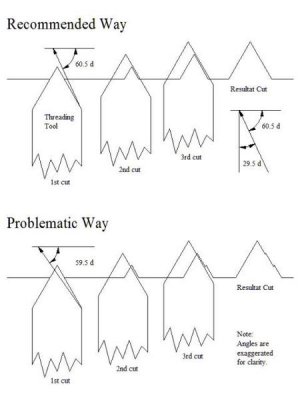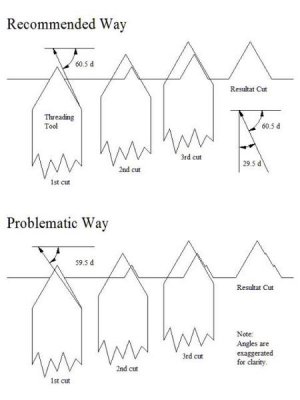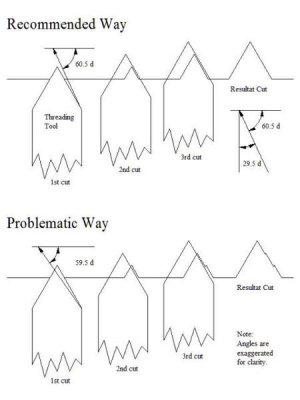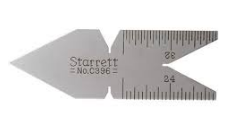- Joined
- Dec 8, 2016
- Messages
- 74
I've tried threading a few times with some success but more failure . I set the lathe up as is shown all over the internet and youtube . . My threads always seem to lean to the right as I'm looking at the lathe ,the thread is formed just doesn't look right. I spent a good couple of hours making a backplate for my 4 jaw ,everthing was perfect and then i started threading the 7tpi 1 3/4 " bore ,then the problems started . The back plate is junk now . I should've taken photos . My thread dial doesn't line up bang on the mark ,it's more like a 1 1/16th of an inch either side ,i can never get my half nuts to engage right on the line . I'm staring to think it's not the correct tread dial . . Any advice welcome .....
Sean
Sean

